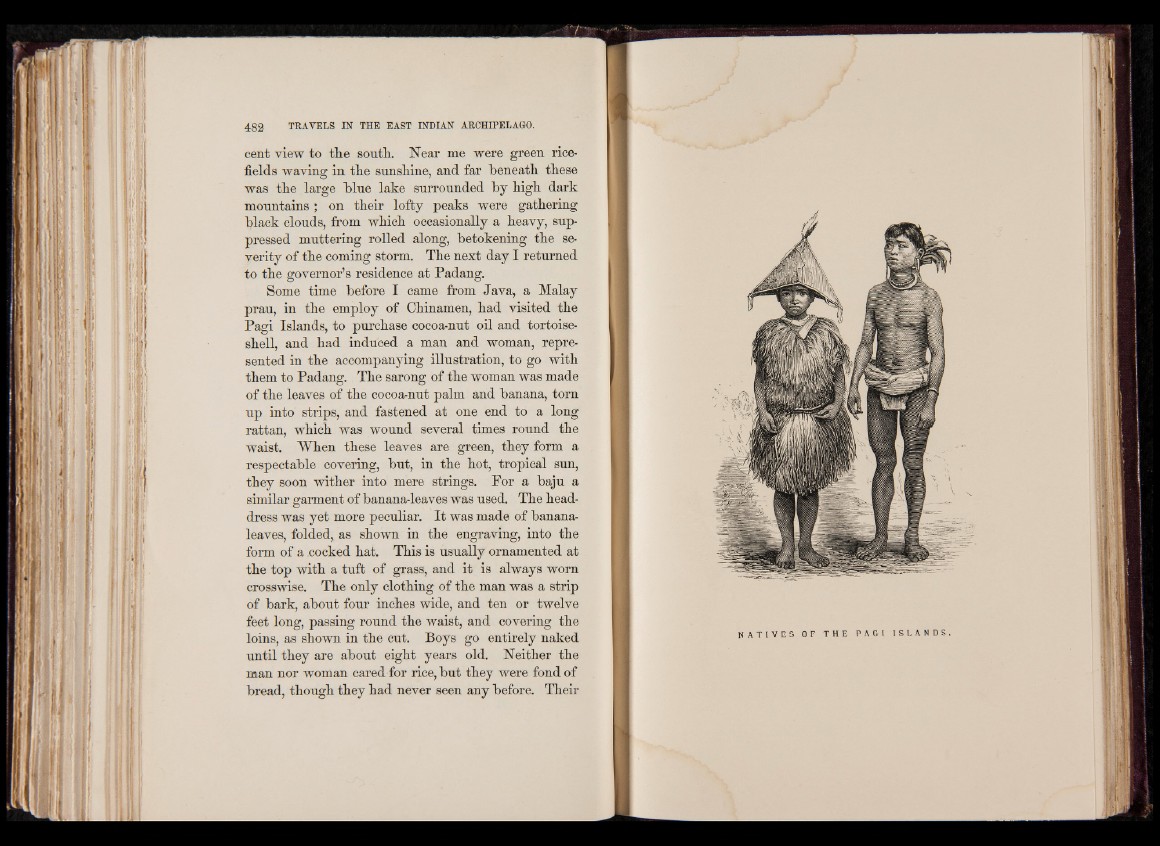
cent view to the south. Near me were green rice-
fields waving in the sunshine, and far heneath these
was the large "blue lake surrounded by high dark
mountains ; on their lofty peaks were gathering
black clouds, from which occasionally a heavy, suppressed
muttering rolled along, betokening the severity
of the coming storm. The next day I returned
to the governor’s residence at Padang.
Some time before I came from Java, a Malay
prau, in the employ of Chinamen, had visited the
Pagi Islands, to purchase cocoa-nut oil and tortoiseshell,
and had induced a man and woman, represented
in the accompanying illustration, to go with
them to Padang. The sarong of the woman was made
of the leaves of the cocoa-nut palm and banana, torn
up into strips, and fastened at one end to a long
rattan, which was wound several times round the
waist. When these leaves are green, they form a
respectable covering, but, in the hot, tropical sun,
they soon wither into mere strings. For a baju a
similar garment of banana-leaves was used. The headdress
was yet more peculiar. It was made of banana-
leaves, folded, as shown in the engraving, into the
form of a cocked hat. This is usually ornamented at
the top with a tuft of grass, and it is always worn
crosswise. The only clothing of the man was a strip
of bark, about four inches wide, and ten or twelve
feet long, passing round the waist, and covering the
loins, as shown in the cut. Boys go entirely naked
until they are about eight years old. Neither the
man nor woman cared for rice, but they were fond of
bread, though they had never seen any before. Their